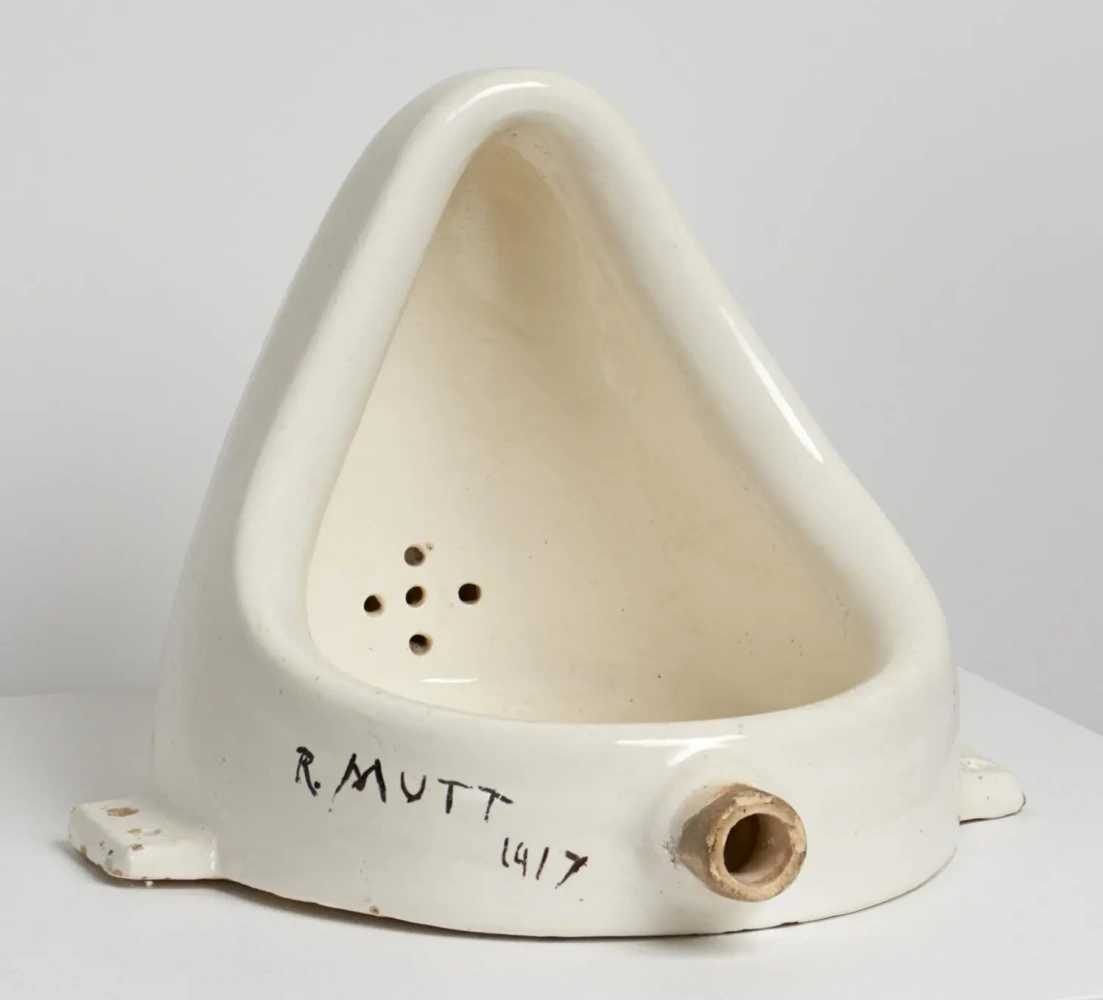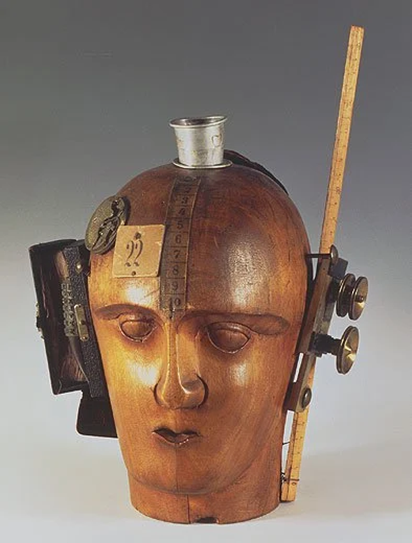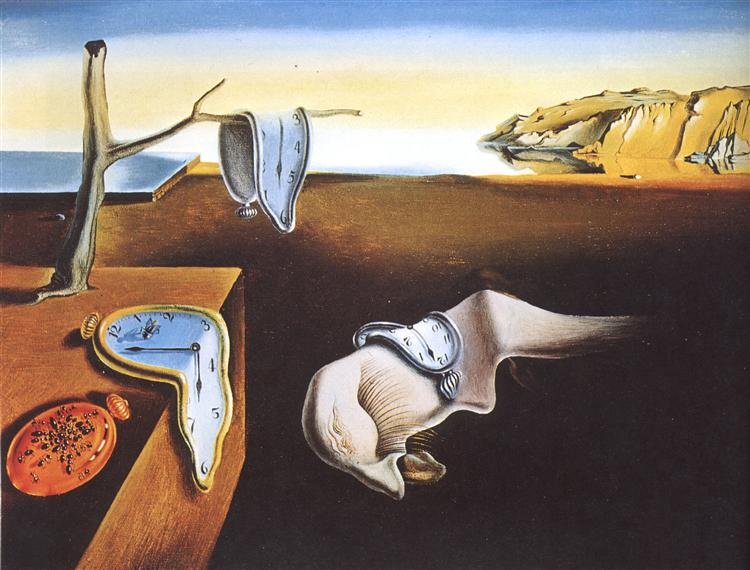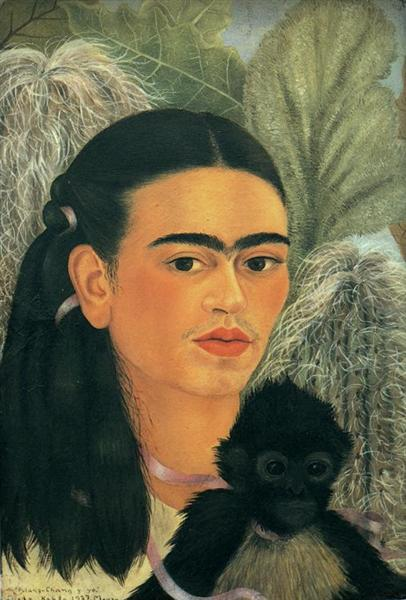Introduction
Surrealism and Dadaism are highly recognizable art movements predominant in the early 20th century. Supposedly surrealism that became common in the 1920s could have emerged from dadaism, which developed earlier in 1916 to 1920 and may have outgrown it. Both movements have distinctive cultural connotations and periods despite the link to dadaism. In light of the supposed connection between the two movements, this paper compares and contrasts surrealism and dadaism. The paper draws upon the work of two classical artists from the two movements. Dadaism is discussed in light of the artwork by Marcel Duchamp (1887–1968), while surrealism is addressed on the ground of the painting by Salvador Dali (1904–1989). Given that the movements emerged around the same time, there exists a connection between the two, but they also differ in a number of ways.
Comparison and Contrast between Dadaism and Surrealism
Dadaism emerged during wartime, mainly World War I (WWI) that happened from 1914 to 1918, as an impulsive response of the artists to the torments of the war. Dadaism, therefore, did not begin as a typical art movement but as a bold opposition to the traditional artistic norms. Dadaism was founded and popularized on the impression of chance as the substance of their creative manifestation (Frank 334). Surrealism emerged in the 1920s, and despite coming after dadaism, it is an independent movement and has no links to the previous movement. It immediately came after dadaism soon after it elapsed, marking the start of surrealism. The movement emerged out of the objection against the direction of the European culture.
Even though Dadaists had no significant influence on surrealism, Sigmund Freud played a major role in influencing the surrealism movement. Surrealism emerged as an easily understood art movement with a primary objective of accepting the unconscious and what lies there. It is more of dream therapy, visions, and an open-minded relationship that entails research to comprehend the unconscious and daydreams better. The illusion in surrealism deprives it of the highly significant enthusiasm of life; it exemplifies emptiness that is quite eccentric at times. This is because people cannot interact with the atmosphere; neither can they listen to the space nor paint their dreams, which form the intention of the surrealists (Breton et al. 300).
However, surrealism appealed to many dadaists who joined the movement. The main distinguishing factor in determining their contribution to both movements is looking at their artwork regarding when they were created. Paintings made after 1926 are principally considered to be created under the Surrealism movement. In a way, dadaists challenged the very definition of art by not following any of its tenets. Surrealism rose out of the desire to challenge modern science including actions and thinking that was eroding European consciousness. Further, dadaism characterized the disdain of rules and collective understanding, and it broadcasted insignificance and absurdity. Surrealism was developed out of the urge to find a connection between the unconscious and realism. It never depicted anti-art, neither did its idea of sovereignty appear similar to what chance’ had for dadaism (Frank 303). In its place, surrealism was grounded on the impression of the subconscious. The artworks under this movement were motivated a lot by dreams. The surrealists often felt that dreaming was in some way linked to the subconscious.
Furthermore, the dadaism movement was a reaction to the supposed absurdity exemplified by the war, especially its ill-advised reasoning, the procedures, and the decisions. Breton et al. (307) state that the dadaists held that since the war could be justified, they could as well transform anything into an art form. They advocated for people to disremember everything they knew and live life as a gamble. Dadaism and the art inspired by it were characterized by vanity and meaninglessness. Dadaism’s artistic doctrines are grounded on having no beliefs, truths, or guidelines. It merely involves twisted reality and being outside the conventional art forms. The dadaism movement was acclaimed internationally across all regions, including France, Germany, Romania, Switzerland, and the United States of America.
Marcel Duchamp (1887–1968) is an American artist born in France who distinguished himself as a radical member of the Dadaism movement all through the twentieth century. He championed the Dadaist movement by using the approach to art involving converting mass-produced items, labeled ready-mades, into a form of artwork. Through the use of ready-mades, he would create different paintings by randomly selecting items and defining them into art. Duchamp chose the ready-made items on the basis of his logic of sarcasm, absurdity, and indifference (Frank 309). Through this approach, he fashioned art of defiance on the set rules and a mockery of the state of things. His major work that closely relates to Dadaism is the toilet sheet sculpture. However, he formed his first Dadaist artwork based on “pure” ready-made using the bottle Rack in 1914.
In 1917 he made his most famous and distinguishable Dadaist art on a first toilet-themed ready-made that he called Fontaine. He simply laid a urinal flush, signed it “R. Mutt,” and baptized it an artwork as depicted below. The original icon painting was lost, and Tate took up the obligation to develop the second version of the Fontaine in 1964 (SFMoMA). Tate made the replica out of glassy porcelain painting that resembled the original ceramic, and he replicated the signature at the bottom in black paint. Duchamp stated that the idea for Fontaine emerged out of a talk he had with sculptor Joseph Stella (1877–1946) and collector Walter Arensberg (1878–1954) in New York. He then proceeded to pay for the urinal from a sanitary ware dealer and organized it to be submitted as an artwork by ‘R. Mutt’ to the newly founded Society of Independent Artists (SIA). Duchamp had helped to establish the SIA, and that he also promoted on the lines of the Parisian Salon des Indépendants.

Duchamp built upon this foundation to develop a series of additional Dadaist artworks until the mid-1960s. The Museum of Modern Arts (MoMA) lists a total of 101 exhibitions and 160 works attributable to Marcel Duchamp. In 1919 Michael Duchamp painted another distinguishable artwork labeled Raoul Hausman, The Spirit of our Time (MoMA), shown below. The painting is an image in an expression of Raoul Hausman, who anticipated the rise of artificial intelligence, mp3 players, and headset radios. It symbolizes the emptiness of the human mind due to the evolution of technology that has taken over a lot of functions initially performed by people. Marcel Duchamp evokes the desire people have to understand themselves but are brought down by dependence on technology. He wonders whether the human actions of mass production have turned human creatures into empty-headed robots whose work is simply to receive information and transmit it without thinking about its implication.

One prominent member of the surrealism movement is Salvador Dali (1904–1989), a Spanish artist. His work was mainly based on imagery, earning the name representational surrealism. MoMA lists a total of 84 exhibitions and 102 artworks attributable to Salvador Dali. My attention is drawn to the painting The Persistence of Memory that was done in 1931 and is shown below. In this painting, Salvador Dalí recreated the nightmares he was experiencing in an illusionist way based on his academic understanding (MoMA). The head-like picture in the foreground represents an image of misplaced humanity.

Another distinguished member of the surrealist movement is Frida Kahlo (1907–1954), a Mexican painter. Her entrance into the industry was marked in 1925 while recovering from a near-fatal bus accident that caused great devastation to her body. She went on to make a distinguishable mark under the surrealism movement over the next three decades. Her work deviated from other Mexican artists and worked with the surrealist leaders. MoMA lists a total of 16 exhibitions and three works attributable to Frida Kahlo, out of which my attention is attracted to the painting labeled Fulang-Chang and I that she painted in 1937 (MoMA), which is shown below.

The picture represents an image of herself alongside one of her pet monkeys. Frida Kahlo was married to another Mexican artist, Diego Rivera, but they could not conceive babies. Therefore, it is believed the monkey is a symbol of the surrogate of the unborn kids the couple could not create. Such a private issue, along with the cherished scale of her canvases were harshly juxtaposed with the paintings of her much-admired equals, the Mexican Muralists. The Mexican Muralist movement was propelled in the course of the Mexican Revolution. The movement was supported by the government and was intended to yield mammoth public frescoes that burrowed the country’s local antiquity and uniqueness (Frank 353). Frida Kahlo’s painting stands out as her significant artwork that was first exhibited at Julien Levy Gallery in New York. Despite Breton, a famed surrealist leader championing her work, Frida Kahlo disputed being part of the surrealism movement.
Conclusion
The two art movements, dadaism and surrealism, were dominant forces in the early 20th century. Their impact on the conventional art was profound and cut across literature, culture, and philosophy in later decades. Dadaism emergent as a force against the ramifications of WWI that had negative connotations on human existence. The architecture of the art movement is intricate since it is based on no previous definition; it has no defined truths, beliefs, and guidelines. Dadaists sought to devour the limits of art and rejoice in absurdity and meaninglessness. On the other hand, surrealism, which emerged soon after dadaism, is a creative journey found on the imagination through dreams, the unconscious, subconscious, realism, and the concealed bond that connects them. Dadaism emerged independently devoid of influence from Freudian theories, but Sigmund Freud played a significant role in shaping the organization of surrealism. Michael Duchamp played a major role in shaping dadaism through his artwork, particularly the Fontaine, while Salvador Dali helped in the development of surrealism using dreamy imagery.
Works Cited
Breton, Andre, et al. Surrealism, Dadaism, Musique Concrete: Three Manifestos. Lulu Press, Inc., 2019.
Frank, Patrick. “Between World Wars.” Prebles’ Artforms: An Introduction to the Visual Arts, 10th ed., Pearson, 2010.
MoMA. “Frida Kahlo. Fulang-Chang and I. 1937 (Assembled after 1939) | MoMA.” The Museum of Modern Art, Web.
“Marcel Duchamp | MoMA.” The Museum of Modern Art, Web.
“Salvador Dalí. The Persistence of Memory. 1931 | MoMA.” The Museum of Modern Art, Web.
SFMoMA. “Fountain ·.” SFMOMA, Web.